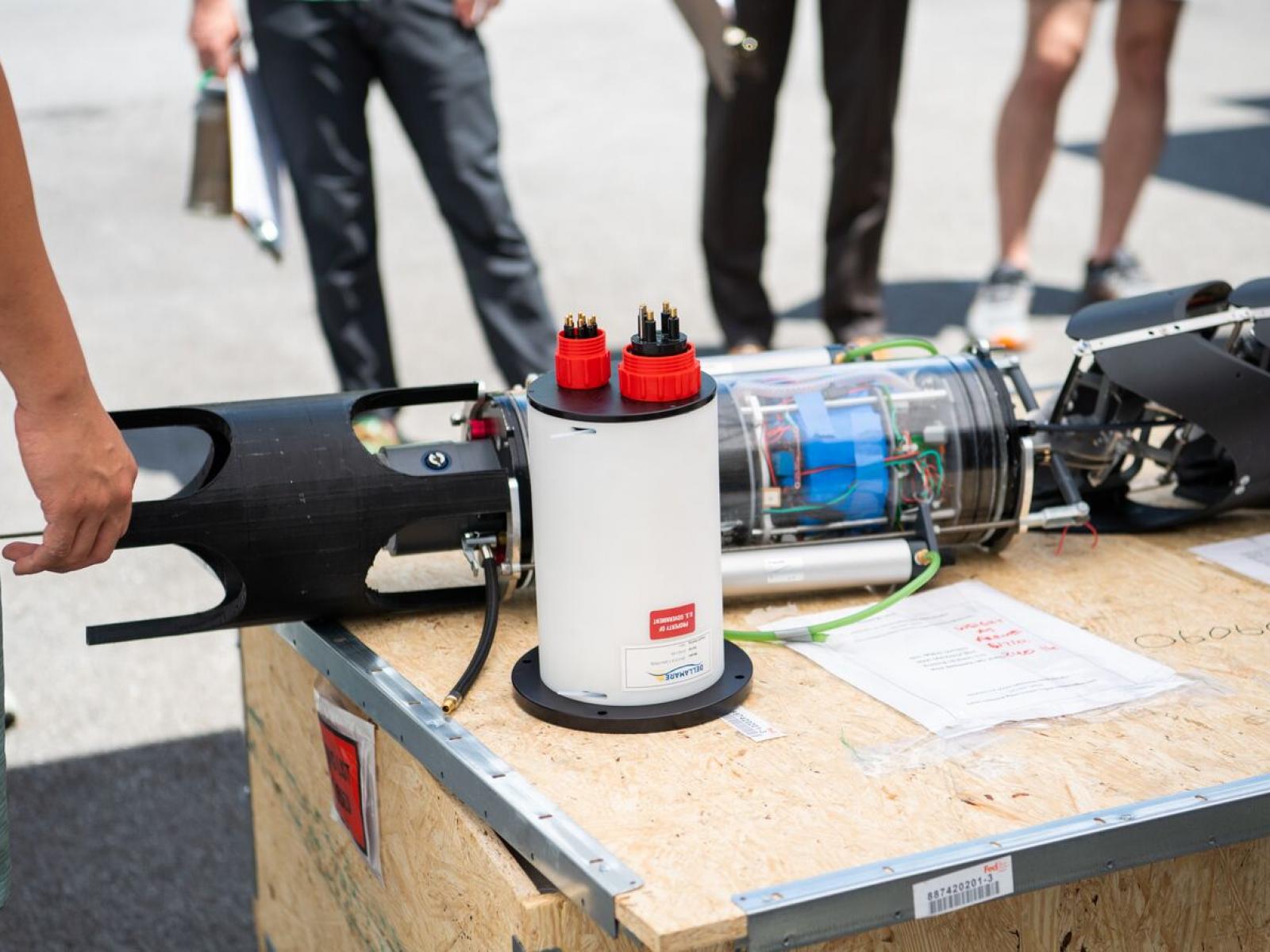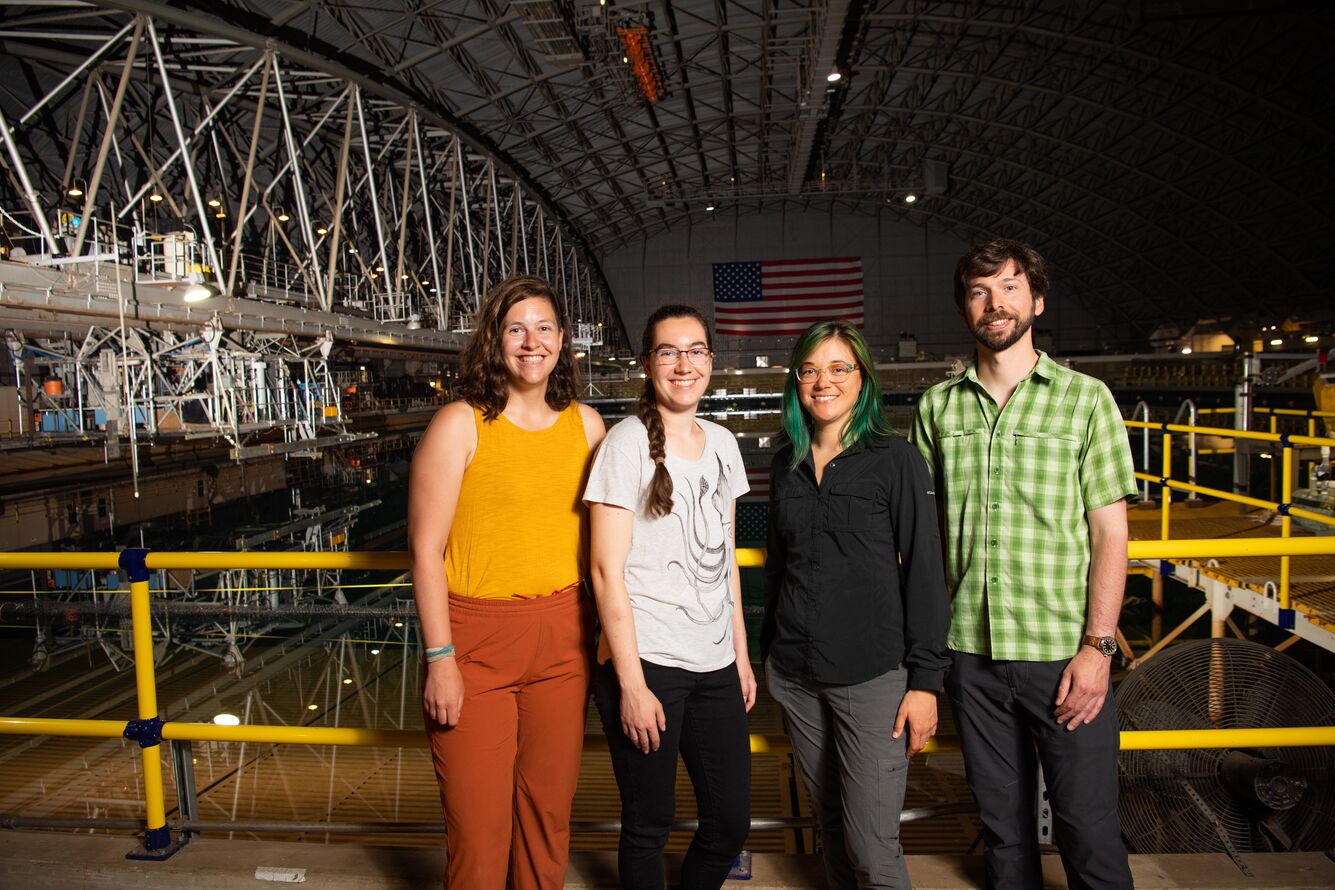The Dummy Payload That’s Actually Very Smart
A PNNL-developed device to help evaluate marine energy prototypes

The dummy payload, developed by PNNL, tracked power generation and usage by marine energy device prototypes during the Ocean Observing Prize: BUILD Contest.
(Photo by Andrea Starr | Pacific Northwest National Laboratory)
Ocean waves, tides, and currents hold immense potential energy that could be used to power a cleaner future—if we have the right technologies to harness that energy. From the lab bench to the ocean, Pacific Northwest National Laboratory (PNNL) is advancing the future of marine energy by supporting the development of new and innovative marine energy device prototypes.
That’s why PNNL participated in the Powering the Blue Economy: Ocean Observing Prize, sponsored by the Department of Energy’s (DOE’s) Water Power Technologies Office (WPTO) in partnership with the National Oceanic and Atmospheric Administration's (NOAA's) U.S. Integrated Ocean Observing System Office. The competition challenged participants to develop a wave-powered device to monitor ocean conditions in places prone to hurricane formation. With the ability to run indefinitely off power generated from waves, such devices would have the capability to provide valuable data from parts of the ocean that are difficult to monitor, ultimately leading to better forecasts that support coastal community safety.
Dummy Payload, Smart Design
DESIGN, the first contest in the Ocean Observing Prize's DEVELOP Competition, challenged competitors to come up with ideas for new marine energy devices. The second contest, BUILD, challenged them to build working prototypes of their designs and test them in a wave tank at the Naval Surface Warfare Center in Carderock, Maryland. For the BUILD Contest, organizers needed a way to measure the energy generated and used by prototypes to judge their overall performance—that’s where the dummy payload was critical.
“My role in this project has been exclusively working on the dummy payload and power monitor,” explained Linnea Weicht, PNNL mechanical engineer. “To track and monitor a hurricane, the prototype devices must power instrumentation to collect data about the storm. The dummy payload was designed to simulate the use of such instrumentation.”

At just about a foot tall, 6 inches in diameter, and encased in white plastic, the dummy payload was designed to look like an Acoustic Doppler Current Profiler (ADCP)—a standard device used to measure water speed and direction at sea. Outfitted with custom-built circuits and reliable data loggers, the dummy payload was attached to each of the prototype marine energy devices tested by competitors. It measured electrical current and calculated the power that each prototype device generated and used to run instrumentation during testing. Reviewers used that information to evaluate the prototypes’ performances and provide feedback that will be useful for future development. WPTO announced the winners of the BUILD Contest in August.
“Not only was the dummy payload key to judging prototype performance in the BUILD Contest,” said Molly Grear, PNNL environmental engineer. “It’s also a useful tool that we could use in the future to inform testing of other device prototypes in our ongoing efforts to advance marine energy.”
Multiple PNNL scientists supported development of the dummy payload and BUILD Contest, including Linnea Weicht, Molly Grear, Erin Walters, Rob Cavagnaro, Ben Roberts, James McVey, Alex Turpin, and former PNNL researcher Nolann Williams. The Powering the Blue Economy: Ocean Observing Prize is administered by PNNL and the National Renewable Energy Laboratory on behalf of WPTO in DOE's Office of Energy Efficiency and Renewable Energy and NOAA's U.S. Integrated Ocean Observing System Office.
Published: November 7, 2022